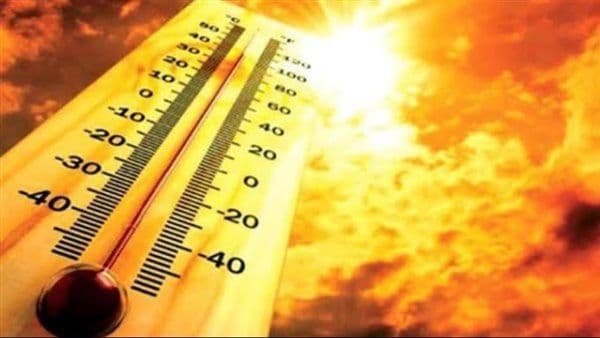The Unseen Fire: Why Egypt's Summer 2025 Feels More Intense Than the Numbers Say
Why does Egypt's Summer 2025 feel so intense? Uncover hidden atmospheric forces, the 'felt' temperature paradox, & vital strategies to cope with this early, unprecedented heat.
The Deceptive Degrees: Unpacking the 'Felt' Temperature Phenomenon
Egyptians are bracing for a summer that feels far more oppressive than standard thermometer readings might suggest. As the issues warnings for a severe heatwave stretching from July 24th to 29th, 2025, the crucial distinction between the reported temperature and the 'felt' temperature becomes alarmingly clear. Official forecasts indicate that the mercury in the shade might hover around 40-41°C in and , yet the actual sensation on the ground will be a scorching 42-43°C. This significant discrepancy, a difference of 2 to 4 degrees Celsius, isn't a mere perception; it's a direct consequence of soaring humidity levels. , a media center member at the EMA, underscores this point, noting that current temperatures are already an astonishing 4 to 6 degrees Celsius above the seasonal averages. It's this unseen, humid fire that truly defines the intensity of Egypt's early summer heat, making daily life feel like navigating through an oven, even when the numbers on paper seem slightly less daunting. Understanding this 'felt' phenomenon is the first step toward appreciating the unique challenges of Summer 2025.
Atmospheric Architects: Behind Egypt's Early Summer Inferno
So, what exactly is orchestrating this intense, early summer heatwave that has Egyptians feeling the burn before August even arrives? Meteorological experts point to a powerful atmospheric duet: the persistent extension of the Indian Monsoon Depression at the surface, combined with an upper-level atmospheric high-pressure system. This formidable duo acts as a giant atmospheric pump, drawing in warmer, moisture-laden air and trapping it over the region. The high-pressure system in the upper atmosphere then suppresses cloud formation and enhances subsidence, further intensifying the solar radiation reaching the surface. This creates a feedback loop, driving temperatures upward and amplifying the feeling of sweltering, sunny conditions. The result is not just high temperatures, but the stifling humidity that pushes the 'felt' temperature well beyond the reported figures. With humidity levels reaching 80-85% in and the , and soaring above 95% in coastal areas, these atmospheric architects are designing a summer defined by its suffocating, rather than merely hot, embrace.

Regional Realities: Hotspots and the Humid Burden
While the entire nation feels the grip of this heatwave, its manifestation varies across Egypt's diverse geography, each region battling its own unique blend of heat and humidity. Inland areas, particularly and the , are experiencing intensely hot and humid daytime conditions. The high humidity, ranging from 80% to 85%, transforms a 40°C day into one that feels closer to 43°C, making simple outdoor tasks arduous. Meanwhile, the northern coastal governorates, despite slightly lower reported temperatures, face an even greater humid burden, with humidity levels often exceeding 95%. This makes the air thick and heavy, significantly hindering the body's natural cooling process through sweat evaporation. Even nights offer little reprieve, remaining hot and humid, especially in the early morning hours. Adding to the regional complexities, parts of and , notably and , are contending with intermittent active winds, occasionally stirring up sand and dust, creating additional discomfort and visibility challenges in an already harsh environment.
Coping in the Crucible: Smart Strategies for Extreme Heat
Navigating Egypt's early summer crucible requires more than just common sense; it demands smart, proactive strategies to ensure daily resilience. With 'felt' temperatures consistently outpacing actual readings, staying hydrated becomes paramount – and that means more than just water. Electrolyte-rich fluids are essential to replenish what the body loses through excessive sweating in humid conditions. Timing outdoor activities to avoid peak sun hours, roughly between noon and late afternoon, is critical. Evenings offer little relief, so planning strenuous tasks for the cooler, though still humid, early morning hours is advisable. Opt for loose-fitting, light-colored, and breathable natural fabrics like cotton, which aid in cooling. Seeking refuge in air-conditioned spaces during the hottest parts of the day is not a luxury but a necessity for many. For those in areas prone to sand-stirring winds, protective eyewear and masks can offer some defense. Being acutely aware of the symptoms of heat exhaustion and heatstroke, both in oneself and others, can be life-saving. These aren't just recommendations; they are vital adaptations to an increasingly challenging climate.
Beyond This Summer: What the Early Peak Foretells
The current heatwave, striking with unusual intensity even before the traditional peak month of August, serves as a stark early warning. As highlighted, recording temperatures 4 to 6 degrees Celsius above seasonal averages in July suggests we are witnessing an 'early peak' of the summer season. This isn't merely an anomaly for 2025; it could be a harbinger of evolving climate patterns in . Such premature and severe heatwaves might signal a longer, more arduous summer season overall, with extended periods of extreme temperatures and heightened humidity. The implications stretch beyond discomfort, impacting public health, agricultural yields, energy consumption, and daily life. This early surge compels us to consider not just immediate coping mechanisms but long-term adaptation strategies. Are we entering an era where July becomes the new August in terms of heat intensity? The patterns emerging this summer underscore the urgent need for robust climate resilience planning, preparing for what could be a new, more challenging normal in the years to come.
Related Articles

The Hidden Heat: Unmasking Egypt's Humid Summer and Adapting to the 'Felt' Reality

The Hidden Heat: Unmasking Egypt's Humid Summer and Adapting to the 'Felt' Reality

Decoding Tomorrow's Swelter: Proactive Steps for an Intense Summer

Decoding Tomorrow's Swelter: Proactive Steps for an Intense Summer

The Invisible Inferno: Why Egypt's Heatwave Feels Hotter Than It Looks

The Invisible Inferno: Why Egypt's Heatwave Feels Hotter Than It Looks

The Invisible Inferno: Unpacking Egypt's Unprecedented Heatwave
